
I don't do "social media" (Instagram/Facebook/etc.) I tried, but found them too offensive. It isn't just that their interfaces are stupid and that they sell you as their product. It is something deeper. They require that you live a Procrustean life suitable for their simplified paradigm of what a life should be. No.
You may believe otherwise. I'm sure the blue pill tasted great.
Instead, I'll post here a series of short(ish) updates on workshop projects and topics.
(It isn't very interesting, but here's a little more about me.)
These notes will be difficult to read on a mobile device. If you believe that you can receive meaningful information in a few square centimeters, then you need to investigate more capable communications hardware. I prefer the codex.
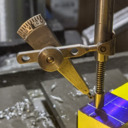
Other Center Indicators
2021-02-16. Other? This post grew out of the work reported in my "Instagram vs. the Ents" Workshop Update, above, which looked into two ways to center a punch mark in a workpiece held on the faceplate or in the four-jaw chuck of a lathe. Here we have a more detailed look into these and related devices. It deliberately excludes the category of devices that I'm calling, generically, (Lever) Center Indicators. These get a writeup of their very own, below.
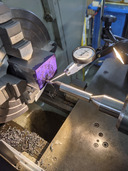
Instagram vs. the Ents
2021-02-11. Using a spring-loaded tapping guide as a center indicating device on the lathe. Why simple images won't do, and the complexity that we need instead.

(Lever) Center Indicators
2021-02-11. The device I'm calling a (Lever) "Center Indicator" was well-known to late 19th and early 20th century machinists. Starrett called theirs a "Center Tester" (No. 65), Brown & Sharpe called theirs a "Lathe Test Indicator" (No. 736), and several others were described in the journals of the day. A similar device is still in production (by Tallgrass Tools). It is used on a lathe to true up a punchmark on a workpiece held on a faceplate or in an independent four-jaw chuck. I found myself to be more confused by the use of this instrument than others seem to have been, and so of course ended up researching it too deeply.
(This writeup began as a section of the "Instagram vs. the Ents" Update, above.)

Sawhorses
2020-05-18. (Something potentially useful for a change.) Re-creating my favorite sawhorses. With a CAD model and drawings.
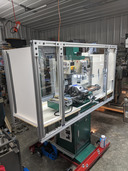
G0759 Mill Enclosure
2020-04-18. An experimental/prototype enclosure for a Grizzly G0759 manual milling machine (without flood coolant).

Angle Blocks (after Pieczynski)
2020-04-03. For making a part for my Barth Type Caster I needed to machine a setup tool (an angle block) with an uncommon angle (8° 20′). To do this I used a very elegant method that I learned from a video by online machinist Joe Pieczynski.

Junior Engineering (1976)
This isn't an update about a current project. Instead, it is an entirely personal recollection of two extraordinary shop classes that I had in Junior High School. If they weren't unique they were close too it. Google knows nothing of them. They deserve not only to be remembered but to be revived.
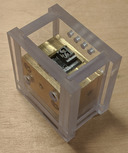
A Matrix Electroforming Case
2020-03-06. The most remarkable, and probably the most difficult, method of electroforming typographical matrices was that used by the late Andy Dunker. It's no fun starting with the easy way.
A good friend of mine once said that he'd finally figured out how to understand what I was talking about: just subtract 100 years from any date I mentioned. He's right. I lived through the 1990s and feel no need to discuss them. For me the '90s are the 1890s. The icons linking to the yearly archives below will reflect this.
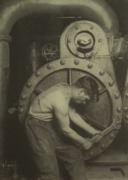
2021 Archive
The image is a photograph by Lewis Hine which is generally called "The Steamfitter." It was published in December 1921 in a progressive journal, The Survey, Vol. 47, No. 14 (1921-12-31). It shows a worker in the steam turbine powered electrical generating station of the Pennsylvania Railroad Company during the early electrification of some of its suburban routes near Philadelphia.
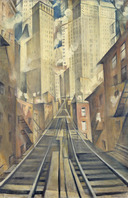
2020 Archive
The image is "The Soul of the Soulless City" by C.R.W.Nevinson. First exhibited in 1920. Image copyright © by the Tate Gallery and released under Creative Commons CC-BY-NC-ND (3.0 Unported). Tate Reference No. T07448.
All portions of this document not noted otherwise are Copyright © 2020 by David M. MacMillan.
Circuitous Root is a Registered Trademark of David M. MacMillan.
This work is licensed under the Creative Commons "Attribution - ShareAlike" license, version 4.0 International. See http://creativecommons.org/licenses/by-sa/4.0/ for its terms.
Presented originally by Circuitous Root®